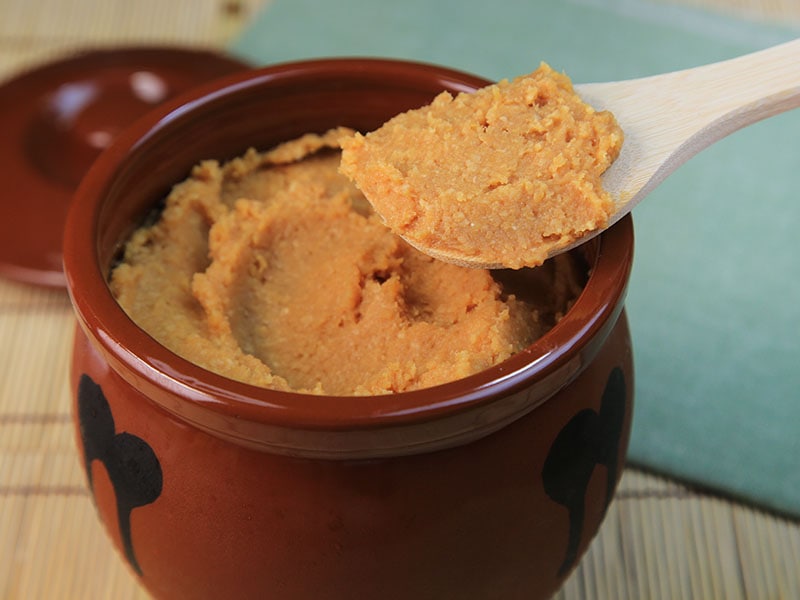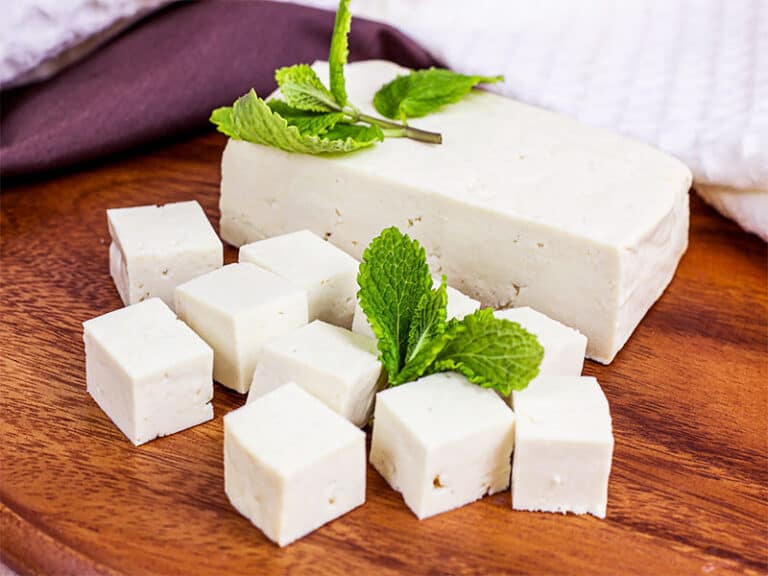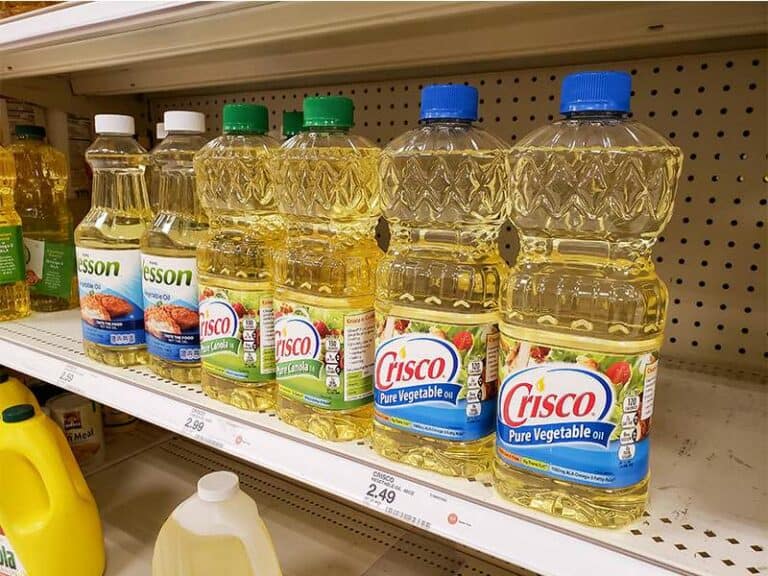Determining the answer to “How long does miso last?” is not simple. If you have thought miso is a perishable food and can last forever, you might be wrong. Every food has a specific shelf life, and miso is no exception.
Unless you know how long miso can last and how to store this fantastic paste, you can take the risks of eating rancid miso and facing many health problems. So don’t worry! This article has got you covered! Keep reading to learn more about this fantastic food.
Miso – A Signature Japanese Food
Miso appeared in many dishes of Japanese people thousands of years ago. However, the history of miso is still a mystery. There are two primary theories about its origin.
The first one says that although this nutrition-rich paste is mainly produced in Japan, its origin is in China. You can trace it back to about the 6th century when Buddhist monks came and brought this paste to Japan.
Another says that miso originated in Japan during the Neolithic era (14000-300 BC).(1)
Miso stands out because people make it with only four main ingredients: soybean, salt, koji (a type of mold), and grain (rice, millet, or barley). After the fermentation period, the result will satisfy many Japanese food lovers.
You can eat this paste raw or mix it with other foods. Most people consider this tasty paste a superhero in various recipes due to its tremendous health benefits.
Thanks to the fermentation period, this nutritious paste contains many beneficial probiotics. These beneficial bacteria assist in improving digestion and strengthening your immune system. Moreover, miso also helps lower the risk of certain cancers. (2)
Depending on how long you ferment and what ingredients you use to make miso, numerous varieties have distinctive tastes and colors.
If you categorize this paste based on the ingredients, you will have three main types: kome, mugi, and mame miso. According to its color, you can divide miso into four main kinds: white, yellow, red, and mixed miso.
Let’s talk about miso taste. When eaten on its own, this protein-rich paste possesses a savory, funky, toasty, earthy, and salt-sweet flavor.
When combining it with other foods, this special paste will shine! Like other fermented foods, like kimchi or yogurt, miso tends to have a sour and tart flavor but is saltier and deeper. People usually use it to make soups, stews, salads, and marinades.
Learn more about how people make this nourishing paste.
How Long Does Miso Last?

Miso is a fermented food that contains a lot of salt. Therefore, its shelf life can last longer than other foods, but it still goes bad over time.
Moreover, the shelf life of light-colored misos is shorter than that of dark-colored ones. And the shelf life is also varied based on different brands.
Therefore, many brands don’t provide expiration dates on miso’s packaging. Instead, there is a best-by or best-before date to inform you how long you can eat high-quality miso.
However, not all companies label a best-by-date on the packaging. Some countries require putting this date on a label, but others don’t. Therefore, sometimes you cannot find it on the packaging.
That’s why determining how long miso can prolong will help you consume this tasty paste at its best quality and prevent consuming rotten miso, which can lead to any unexpected illness.
In The Pantry
You can store your unopened miso at room temperature for roughly one year. At this time, the texture and color of miso do not change much, and thus it is still safe to use.
When it comes to opened miso, its shelf life is shorter than unopened ones because once opened; the miso paste is exposed to air.
If you place opened miso outside, you should enjoy it within three months to enjoy its high quality. However, it doesn’t mean you can throw it away after 3 months.
Most of them are still consumable after four months or even one year. But the quality and taste may be degraded a little bit. So overall, if you store it properly in the pantry, it can prolong its shelf life by up to a year.
Plus, you should depend on its best-by-date labeled in the packaging to know exactly how long you can still use your miso at its best. Although your miso cannot go rancid after the best-by-date, its quality and taste can be changed.
Note: You should never put it near the stove or remove it from place to place frequently. The sudden temperature change will negatively affect the quality of your miso.
In The Fridge
It would be better to place both unopened and opened miso in the fridge, and there are no big differences between their shelf life. Opened miso can last roughly one year, and unopened one can prolong up to two years if you store them correctly.
Unopened miso can be stored outside the fridge. Regarding opened miso, you should transfer this paste into sealed bags or containers before placing it in the fridge. Doing this can shield your miso from contamination and keep its freshness longer.
In The Freezer
You can freeze both unopened and opened miso for about six months before miso loses its savory umami flavor. Although it sometimes takes time to defrost frozen miso before using it, your miso can still be good after a long period.
Note: Make sure you use appropriate containers that are sealed tightly to store your miso in the freezer.
Early Warning Of Spoiled Miso
In some cases, your miso is still edible even if it has exceeded its best-by date. However, you should consider some signs of bad miso to ensure your food safety.
Color
One of the most apparent signs that you can determine your tasty miso is rotten is its color. The colors of miso will vary depending on its fermentation period and ingredients.
Note that miso can turn darker over time, especially when placed in warm places. This change is normal and doesn’t tell you that your miso is rancid.
However, once miso is rotten, it tends to have discolorations and mold, a sign of harmful bacteria growth. And keep in mind, never consume it!
Texture

You may also depend on miso’s texture to know if it is rancid. Specifically, you can notice your miso doesn’t have the same texture as the one you first buy from the market. Moreover, you should consider throwing it away when it starts to get crusty or looks slimy.
Smell
The sense of smell is another good way. If you smell the miso with any unpleasant aroma or an off odor, your miso is unsafe to consume.
Note: Depending on one of these red flags won’t help you tell precisely whether your miso is rotten. It would be best to combine three signs and notice the best-by-date that manufacturers print on its packaging.
How To Store Miso Properly?

To avoid your miso getting one of these red flags above, you need to learn to preserve it correctly. Here are some tips for storing miso properly
In The Pantry
In case you want to store your miso at room temperature, the pantry is an ideal place to put it. There are some tips to keep miso in the pantry.
Unopened Miso
You can store unopened miso more efficiently than opened miso in the pantry. You need to put it in cool and dark places in your kitchen.
Remember to let it stay away from direct contact with heat sources and light. Moreover, you should never place it near the oven since the drastic temperature change can affect your miso’s taste.
Opened Miso
Once opening the miso, you should try to put them in sealed bags or containers. Like unopened miso, you need to place it in places with cool temperatures. However, it would be better to store miso in the fridge right after opening it.
In The Fridge
Storing miso in the refrigerator is a better way to keep its shelf life longer. You need to seal the containers tightly to avoid bacteria growth or cross-contamination.
If you buy miso packets and don’t eat them up, you should transfer them into other airtight containers or zipper bags. Remember to clean and dry kitchen tools or spoons before you use them to scoop miso out.
In The Freezer
The freezer is the best place to preserve your miso for as long as possible. Unopened and opened miso can retain its taste and freshness if you freeze them at a temperature of 25℉ (-4 ℃) to -5℉ (-21℃). Here are some tips that help you freeze miso correctly.
Like storing miso in the fridge, you need to place miso in airtight containers or sealed bags to prevent this paste from being in contact with the air. To save time thawing the frozen miso, you can freeze it in the ice trays.
By doing so, you don’t have to thaw whole frozen miso paste containers. Remember to label the date you start to put your miso in the freezer on the containers.
How Do You Defrost Miso?
After taking your frozen miso out of the freezer, you can put this malleable paste directly into the foods you are about to cook without defrosting it in advance. However, if you want to thaw your miso paste, there are a few tips.
The best place to defrost your frozen miso is in the refrigerator. You should put it in the fridge for a few hours before using it. Another way is to use a bowl of warm water and soak the frozen miso in. You should wait about five to ten minutes until your miso has defrosted.
Amazing Recipes With Miso
Due to its tasty and unique flavor, you can mix miso with numerous foods. There are four mouthwatering and easy-to-cook recipes that you can serve your loved ones.
Saucy Miso Mushrooms With Udon Noodles
This dish will satisfy you if you are a big fan of udon noodles. The chewy texture of udon makes it easy to absorb lots of sauce. This fabulous dish stands out with the blend of meaty and savory portobello mushrooms and mildly salty and spicy miso.
Don’t hesitate to make this wonderful treat to serve yourself and your loved ones.
Salmon With Sweet Potato Mash & Miso Coconut Sauce
This dish may be your go-to recipe if you are pursuing a healthy diet. The combination of various flavors in this treat may surprise you. Buttery salmon combines with the flavorful miso coconut sauce and a starchy, sweet taste of sweet potato mash.
Miso Marinated Steak Tips
This dish is an excellent choice for those who want to save cooking time. Your fresh steak will be marinated with a pungent taste of garlic, ginger, and a salty and savory miso flavor. Within a few minutes, you can make this exquisite dish to serve your family at gatherings or parties.
Miso-Glazed Aubergine (Nasu Dengaku)
If you are a vegetarian, you should try this dish at home. The combination of a robust taste of miso sauce and the creamy eggplants will create an explosion of flavor.
When baked, the flavorful aroma will spread throughout your whole kitchen. You can prepare this healthy dish and enjoy it with rice on a busy day.
You can practice making this delicious at home within a few minutes.
FAQs
For those who want to discover more about this marvelous paste, I will equip you with some answers to some questions people typically ask about miso. Stay stunned, and keep reading!
Becoming A Miso Master Is Not Tricky
After going over this article, I believe that you are equipped with all the necessary knowledge about miso, and from then on, you can be more confident to tell the world that you are a miso master. Don’t hesitate to try this mouthwatering treat and make it with your favorite recipes.
One last thing is that if you want to try your tasty miso paste in the long run, stick to its shelf life and the helpful tips above to store it properly. Moreover, give your miso a proper sniff or notice any unusual changes to ensure it is still edible.
Do you know something interesting about miso? If yes, please write your point of view in the comment section. I would appreciate it if you could give this article a like and share it with others around you. Thank you so much!
References
- Miso (2022) Wikipedia. Wikimedia Foundation.
- Petre, A. (2017) Why miso is incredibly healthy, Healthline. Healthline Media.






